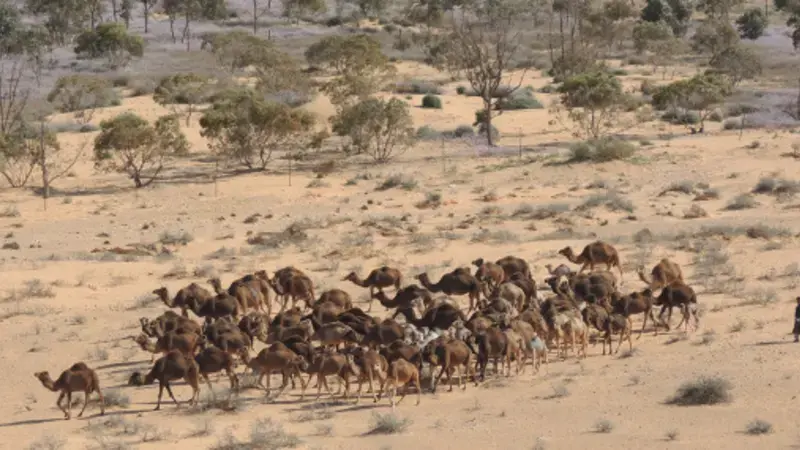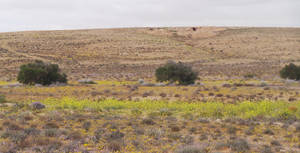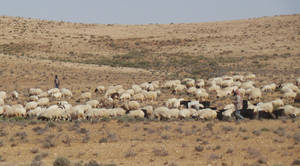A new comprehensive rangeland management tool for dryland areas can help promote sustainable land use

What is often under-appreciated and at times not recognized is that rangelands are vast and varied ecosystems that provide valuable resources such as vegetation, water and soils. These contribute significantly towards improving livelihoods, offering income sources, food and nutrition security, trade and tourism.
Yet these resources are continuously challenged, curtailing the resourcefulness of rangeland ecosystems. Population growth is placing additional demands on food, pasture, livelihood sources and water. Unsustainable land use practices, such as overgrazing, rapid agriculture and urban land expansion, are leading to land degradation. These and other poor management strategies are also being compounded by additional challenges such as climate change.
Developing effective management strategies and solutions to safeguard and preserve the productivity of rangelands are therefore crucial. Though efforts towards rangelands rehabilitation have been made by development partners, the scale is too small and lacks a holistic approach. Numerous challenges include poor government policies, loss of indigenous knowledge and land use know-how, lack of trust between locals and institutions and a poorly informed approach towards rangeland rehabilitation that often fails to consider local development adoption and sustainability.
A holistic approach towards restoration and sustainable land use
Three institutions – the International Livestock Research Institute (ILRI), the International Center for Agriculture Research in the Dry Areas (ICARDA) and the International Union for Conservation of Nature (IUCN) – have been working together to develop a rangeland restoration toolbox that aims to compile the current state-of-knowledge on sustainable rangeland management practices in dry areas. This information resource is expected to contribute significantly towards ensuring that rangelands ecosystem services are managed and used sustainably and reach a level of land degradation neutrality.
Through targeting a landscape scale that uses an integrated and multidisciplinary approach, this promising tool aims to address the biophysical and socioeconomic linkages and trade-offs existing between the different land uses. The approach highlights the important role of rangelands governance within communal areas. It also underscores the need to base decision-making on both indigenous knowledge and modern science, in order to empower communities to make good choices based on the best information available.
To maintain and improve the sustainable productivity of rangelands, it is important to understand how they respond to ongoing environmental changes and anthropogenic pressure. This knowledge is essential to guide conservation and restoration efforts in rangelands occupying drylands. The toolbox will help communities, policy makers and other development actors define and describe key sustainable rangeland management practices and also illustrate how they are to be used through scenarios from specific targeted regions. The projected results include better management and restoration of rangelands in dry areas, where demand for accessible and productive land is increasing.
What’s in the toolbox?
At an experts’ meeting that took place in Tunisia from 17-18 April this year, scientists from ICARDA, IUCN, NARS and consultants defined and agreed upon on the contents of the toolbox:
- Rationale: justifications, objectives and usages of the toolbox
- Description of the target site/community: a diagnostic study is conducted before implementation of an intervention
- Descriptions of key sustainable rangeland management practices (SRMP): these practices are similar to the sustainable land management (SLM) developed by the World Overview of Conservation Approaches and Technologies (WOCAT)
- Special emphasis on two overarching practices: 1) participatory approach aimed at securing good governance and 2) rational grazing management
- “How-to” illustrations: how the toolbox functions through sample scenarios/specific examples
- Glossary: key terms used in the toolbox
Expected completion of the toolbox is before the end of 2019. IUCN intends to integrate it in training courses in restoration projects, such as the Healthy Ecosystems for Rangeland Development project. This project aims at strengthening restoration and sustainable management of pastoral rangelands in Egypt and Jordan to restore and protect ecosystem services and biodiversity, with a view to scale regionally and globally.
Read more about drylands and their resources in this IUCN post.
Original source: ILRI, Posted on by MIREILLE FERRARI - A new comprehensive rangeland management tool for dryland areas can help promote sustainable land use
Mounir Louhaichi is a range ecology and management research scientist at ICARDA. He has more than 25 years’ experience in rangeland ecology and management, including over 10 years conducting research on alternative technologies for improved natural resource management. Contact him at [email protected].
This work was supported by the donors through their contributions to the CGIAR Trust Fund.


